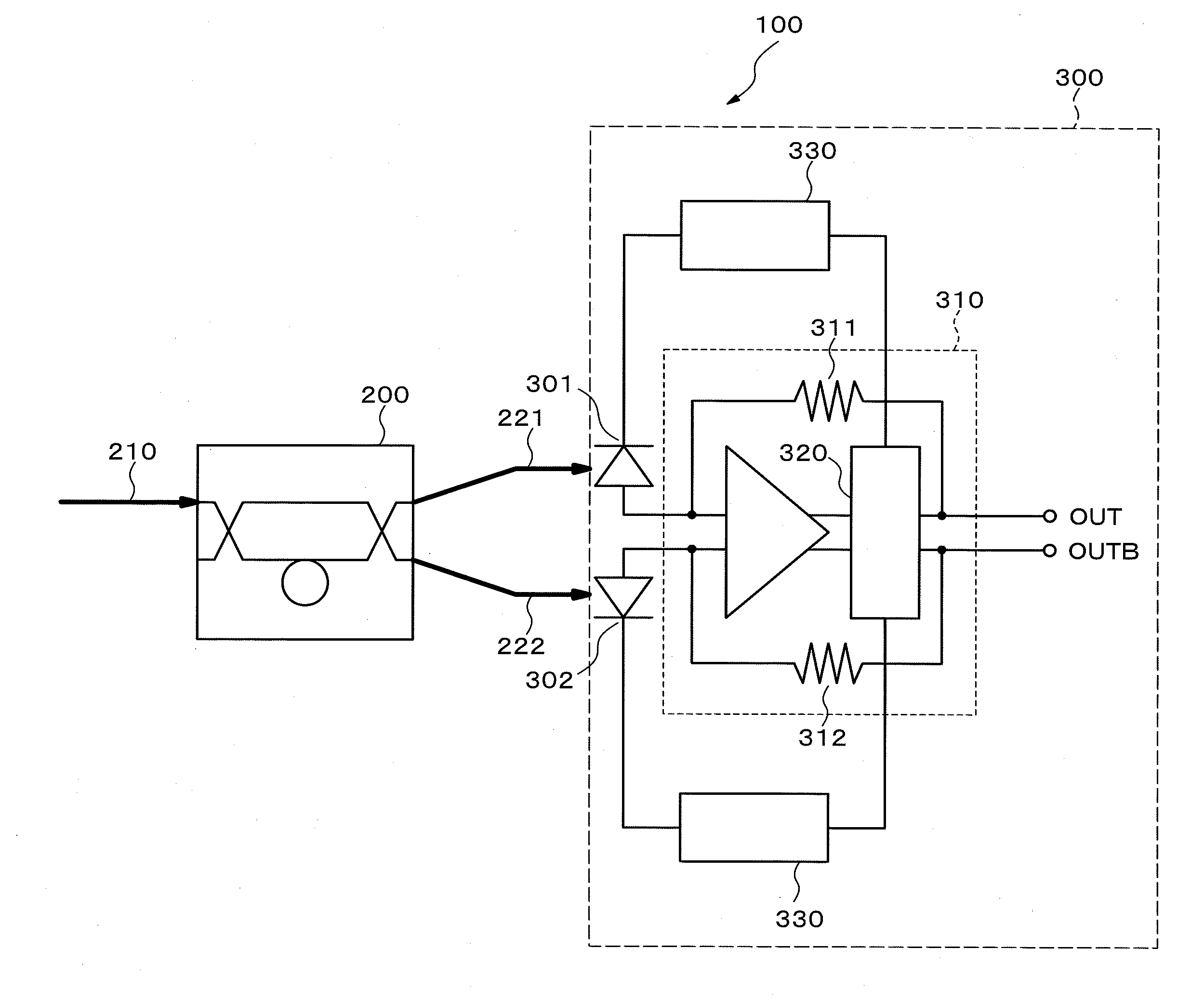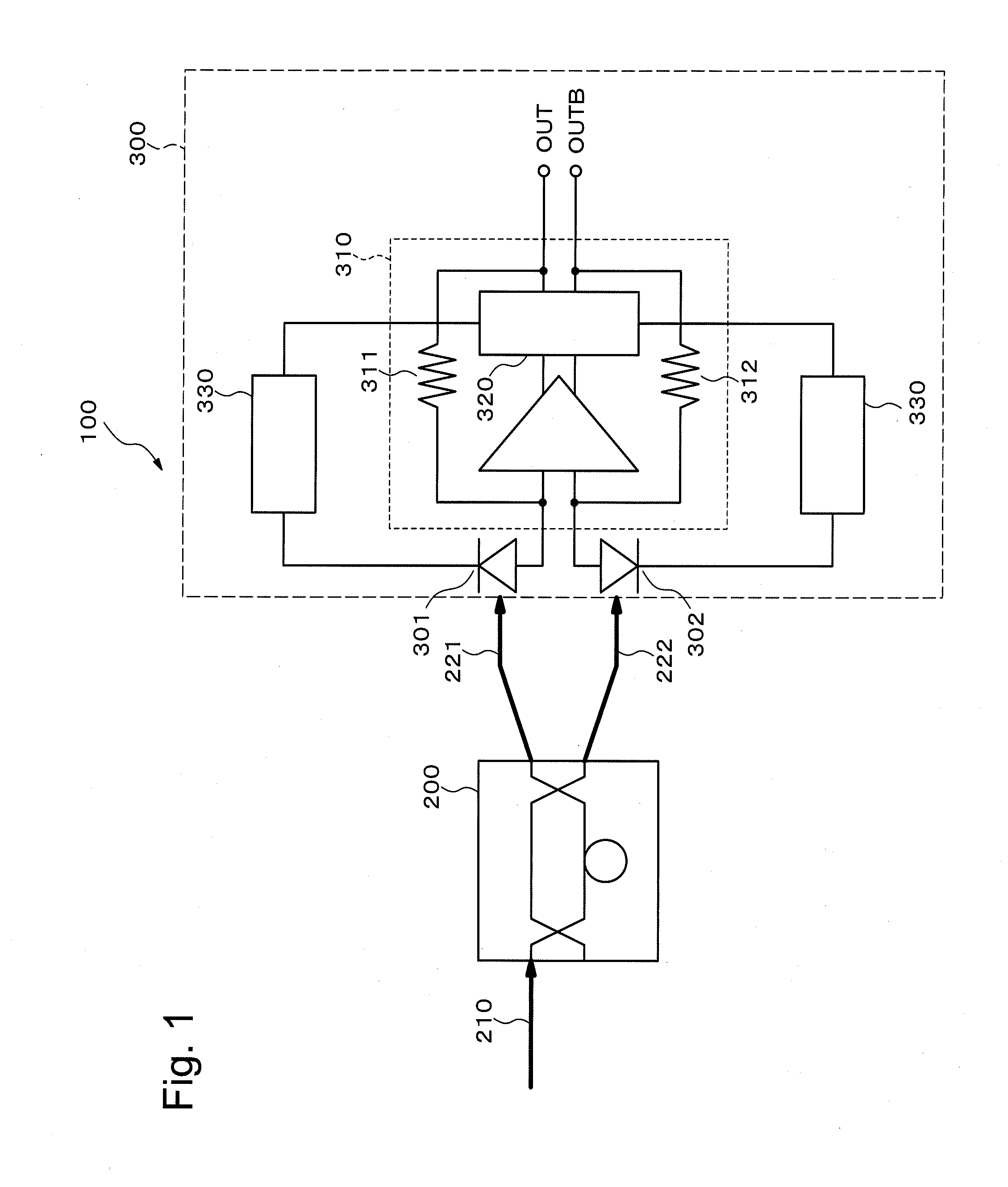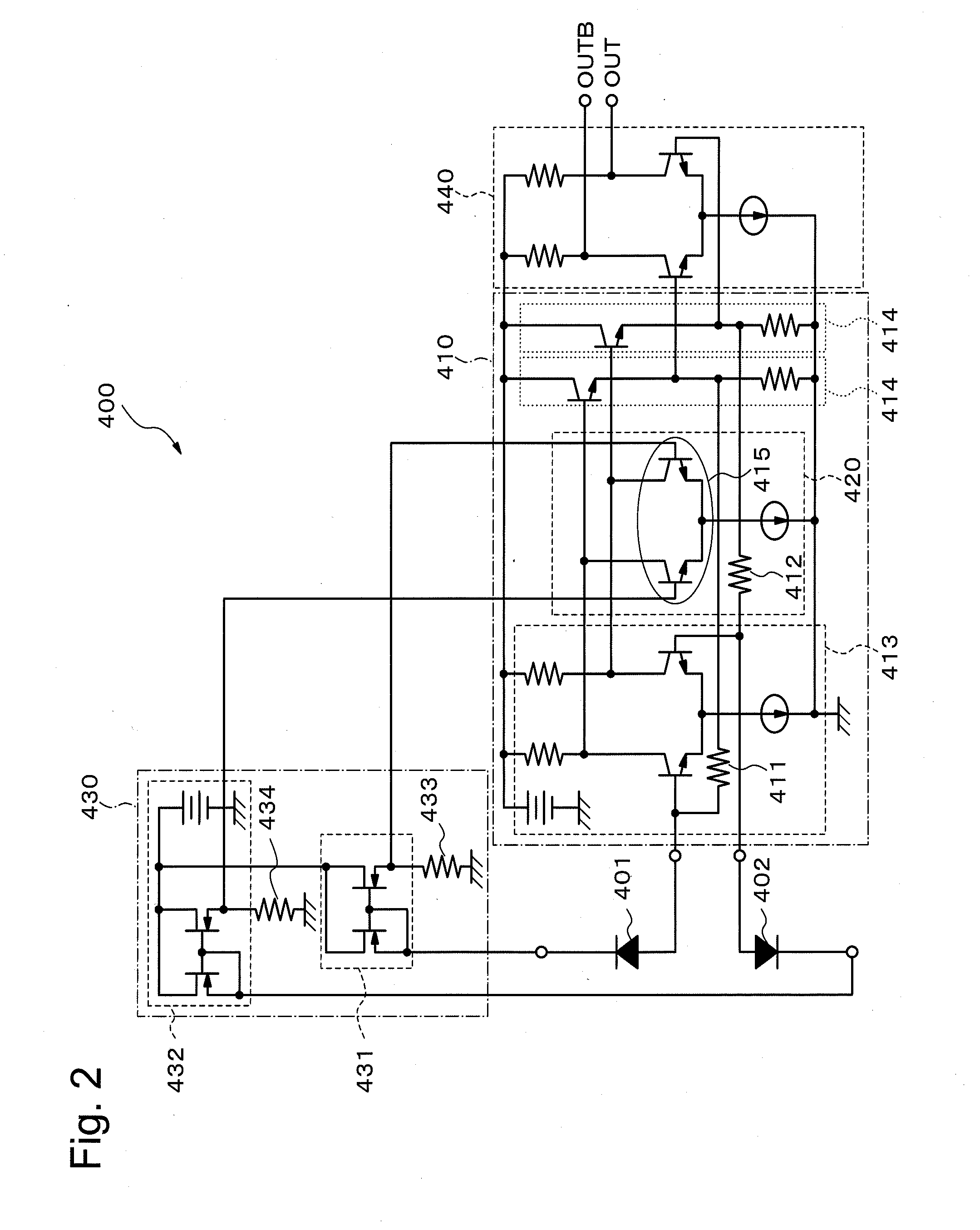Optical receiver, optical reception device, and correction method for optical received intensity
a technology of optical reception and optical receiver, which is applied in the direction of transmission monitoring, transmission monitoring/testing/fault-measurement systems, electrical devices, etc., can solve the problem of signal-to-noise ratio, transmission length is generally limited, and the received intensity of two optical signals may not be kept equal in some cases
- Summary
- Abstract
- Description
- Claims
- Application Information
AI Technical Summary
Benefits of technology
Problems solved by technology
Method used
Image
Examples
first exemplary embodiment
The First Exemplary Embodiment
[0039]FIG. 1 is a block diagram showing the configuration of an optical reception device 100 according to the first exemplary embodiment of the present invention. The optical reception device 100 receives an optical modulated signal which is obtained by carrying out the differential phase shift keying (for example, DPSK system or DQPSK system) by using the return-to-zero (RZ) code (hereinafter, referred to as “RZ-DPSK signal”), and demodulates the received optical modulated signal. The optical reception device 100 includes a 1-bit delayed interferometer 200 and an optical receiver 300.
[0040]The 1-bit delayed interferometer 200 is provided with a 1-bit delay element in one of a pair of optical waveguides, and outputs a pair of two optical signals of a first optical signal 221 and a second optical signal 222 which correspond to a phase difference between adjacent bits of one optical input signal 210 modulated by the RZ-DPSK system. Here, it is assumed tha...
second exemplary embodiment
The Second Exemplary Embodiment
[0049]Next, the second exemplary embodiment of the present invention will be described. FIG. 2 is a circuit diagram showing the configuration of an optical receiver 400 according to the second exemplary embodiment of the present invention. The optical receiver 400 includes a first photodiode 401, a second photodiode 402, a differential transimpedance amplifier 410, a level adjustment unit 420, and a photoelectric current detection unit 430. The configuration is the same as that of the optical receiver 300 according to the first exemplary embodiment. Here, the optical receiver 400 composes an optical reception device with the 1-bit delayed interferometer 200.
[0050]The first photodiode 401 and the second photodiode 402 receive optical signals whose phase difference corresponds to the phase difference between two adjacent bits. That is to say, the first photodiode 401 receives the first optical signal with the normal phase from the first output terminal o...
third exemplary embodiment
The Third Exemplary Embodiment
[0063]Next, the third exemplary embodiment of the present invention will be described. FIG. 4 is a circuit diagram showing the configuration of an optical receiver 500 according to the third exemplary embodiment of the present invention. The optical receiver 500 includes a first photodiode 501, a second photodiode 502, a differential transimpedance amplifier 510, a level adjustment unit 520, and a photoelectric current detection unit 530. Here, the optical receiver 500 composes an optical reception device with the 1-bit delayed interferometer 200. In the optical receiver 500 according to the present exemplary embodiment, the configurations of the level adjustment unit 520 and the photoelectric current detection unit 530 are different from those of the optical receiver 400 according to the second exemplary embodiment.
[0064]The first photodiode 501 and the second photodiode 502 receive optical signals whose phase difference corresponds to the phase differ...
PUM
 Login to View More
Login to View More Abstract
Description
Claims
Application Information
 Login to View More
Login to View More - R&D
- Intellectual Property
- Life Sciences
- Materials
- Tech Scout
- Unparalleled Data Quality
- Higher Quality Content
- 60% Fewer Hallucinations
Browse by: Latest US Patents, China's latest patents, Technical Efficacy Thesaurus, Application Domain, Technology Topic, Popular Technical Reports.
© 2025 PatSnap. All rights reserved.Legal|Privacy policy|Modern Slavery Act Transparency Statement|Sitemap|About US| Contact US: help@patsnap.com



